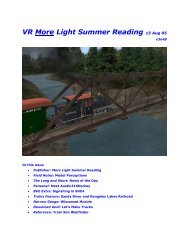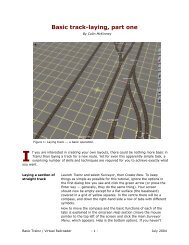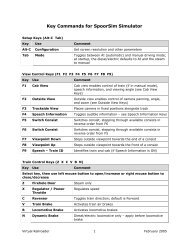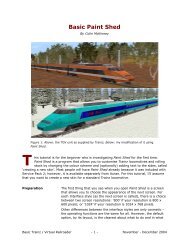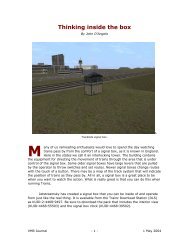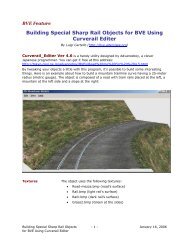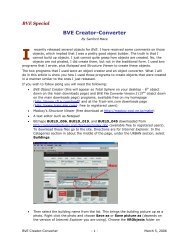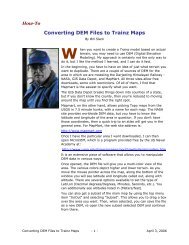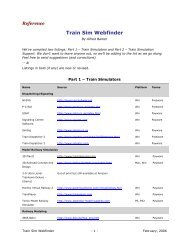Old Maude, Preface - Virtual Railroader
Old Maude, Preface - Virtual Railroader
Old Maude, Preface - Virtual Railroader
You also want an ePaper? Increase the reach of your titles
YUMPU automatically turns print PDFs into web optimized ePapers that Google loves.
unforgettable moment, I stood alongside a 4-8-4 Niagara when<br />
those 79-inch diameter drivers started. I was astonished to see<br />
the wheels skid as that giant piece of machinery, straining under<br />
its load, took several strokes to finally gain a foothold. In that<br />
moment I felt the magnitude of the forces at work.<br />
The diesels, though less spectacular, created an impressive<br />
commotion of their own when their 4000-horsepower's worth of<br />
internal combustion engines roared into action.<br />
What could have passed unseen amid this awesome display of<br />
power, but didn't, was the unassuming ease with which the<br />
electric locomotives delivered their trains to the waiting steam<br />
and diesels. Quietly, effortlessly, unceremoniously they arrived<br />
and were uncoupled and jockeyed to an inbound track for the<br />
return trip to Grand Central. A cartoon equivalent of this<br />
incongruous sequence is the bent, gray-haired cleaning woman<br />
singlehandedly picking up and moving the champion weightlifter's<br />
barbells to dust under them. How these undersized boxes on<br />
wheels could outperform their more celebrated steam or diesel<br />
counterparts was a mystery. As much a mystery was the<br />
electrics' curious shapes that revealed little of their underlying<br />
nature and concealed the transformation of electrical energy to<br />
mechanical motion.<br />
These were true "black boxes." S-motor number 6000, the<br />
Central's 1904 prototype also known as <strong>Old</strong> <strong>Maude</strong>, could have<br />
been the original "black box," though it wasn't. That title would<br />
be more fitting for the tiny four-wheel electric locomotives built<br />
in 1890 for the City & South London's deep-tube subway.<br />
External appearances left little clue as to how the S-motor<br />
worked. With its center cab and biaxial symmetry, there was<br />
even doubt as to which way it might move next. There were no<br />
side rods connecting its drive wheels to suggest that it could<br />
move of its own accord. When it did move, there was little sound<br />
from inner activity. There was no steam for propulsion nor smoke<br />
nor exhaust from combustion. There were no overhead wires<br />
from which to gain electrical energy. The stunted pantographs<br />
appeared more like antennae. Only a close observation would<br />
reveal the frame-mounted contact shoes which pressed the<br />
underside of the energized third rail. Appropriately, the<br />
locomotive was painted black; all black save for the gold letters<br />
and numbers.



